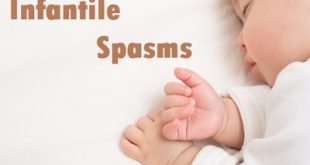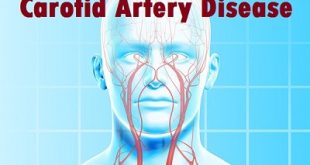Definition
Charcot Marie Tooth Disease or CMT is named after the three neurologists who first described the condition in 1886. It is the most common inherited neuromuscular disorder, affecting approximately 1 in 2,500 individuals. The other term commonly used to describe the condition is hereditary motor and sensory neuropathy (HMSN). This name describes the two primary features of this condition: it is hereditary (passed on in the genes from parent to child) and it affects the motor and sensory peripheral nerves.
CMT is not in fact a single disorder but a group of conditions that have some similarities. Neuropathy means a disease of the peripheral nerves. These are the nerves that connect the spinal cord to the muscles, joints and skin and carry messages in both directions, and in CMT they do not function normally. The group of conditions known as CMT cause weakness and wasting of the muscles below the knees and often those of the hands as well. Many affected individuals also have loss of feeling in the hands and feet. Disease onset usually occurs during the first decades of life and gets worse slowly. Severity is highly variable even within families, but the condition only rarely leads to severe disability.
The genetics of CMT is complicated. Mutations in about 50 genes cause the various forms of CMT and the closely related conditions of Hereditary Motor Neuropathy (HMN) and Hereditary Sensory and Autonomic Neuropathy (HSAN). Two further complicating factors are that different mutations in the same gene can cause different phenotypes (meaning that two patients with the same gene affected can have different symptoms), and that the same phenotype (same symptoms) can be caused by mutations in different genes.
Epidemiology
The prevalence of CMT ranges from 10 to 30 per 100,000, depending on the geographical region of origin. Two extensive studies in the literature indicate that the most common subtypes are CMT1 (demyelinating with autosomal-dominant transmission) and CMT2 (axonal and usually dominant). In Western countries, the most common cause of CMT1 is CMT1A, which results from the duplication of a genomic fragment that encompasses the PMP22 gene on chromosome 17. It would appear that CMT1B is more common in Japan than in Western countries. In the recent years, all the published studies identify CMT2A as the most common cause of CMT2 (which would account for 10–33% of cases).
Types of Charcot Marie Tooth Disease
There are five main types of CMT, which includes:
CMT 1: This is the most common type of CMT which mainly occurs due to duplication of the chromosome number 17 but can also occur due to other gene defects. This gene mainly functions by controlling the production of the protective covering of the nerves i.e. the myelin sheath.
- CMT1A results from a duplication of the gene on chromosome 17 that carries the instructions for producing the peripheral myelin protein-22 (PMP22). The PMP22 protein is a critical component of the myelin sheath. Overexpression of this gene causes the abnormal structure and function of the myelin sheath. CMT1A is usually slowly progressive. Individuals experience weakness and atrophy of the muscles of the lower legs beginning in childhood; later they experience hand weakness, sensory loss, and foot and leg problems. A different neuropathy distinct from CMT1A called hereditary neuropathy with predisposition to pressure palsy (HNPP) is caused by a deletion of one of the PMP22 genes. In this case, abnormally low levels of the PMP22 gene result in episodic, recurrent demyelinating neuropathy.
- CMT1B is caused by mutations in the gene that carries the instructions for manufacturing the myelin protein zero (MPZ, also called P0), which is another critical component of the myelin sheath. Most of these mutations are point mutations, meaning a mistake occurs in only one letter of the DNA genetic code. To date, scientists have identified more than 120 different point mutations in the P0 gene. CMT1B produces symptoms similar to those found in CMT1A.
- Other less common causes of CMT1 result from mutations within the SIMPLE (also called LITAF), EGR2, PMP22, and NEFL genes, respectively.
CMT 2: This type of CMT chiefly results from a defect in the axons of the peripheral nerve cells. It usually occurs due to a defect in the Mitofusin 2 gene.
CMT 3: Also known as the Dejerine-Sottas disease, this rare type is caused by a mutation in the P0 or PMP-22 gene.
CMT 4: A type of CMT which can occur due to mutation of several genes including GDAP1, MTMR13, MTMR2, EGR2, PRX, SH3TC2, NDG1, FDG4, and FIG4.
CMT X: The X type of CMT is caused due to a point mutation in the Connexin-32 protein on the X chromosome.
Risk factors
- Charcot-Marie-Tooth disease is hereditary, so you’re at higher risk of developing the disorder if anyone in your immediate family has had the disease.
- Other causes of neuropathies, such as diabetes, may cause symptoms similar to or worsen Charcot-Marie-Tooth disease.
- Other causes of neuropathies, such as diabetes, may cause symptoms similar to or worsen those of Charcot-Marie-Tooth disease. Also, medications such as the chemotherapy drugs vincristine (Marqibo), paclitaxel (Abraxane, Taxol) and others can make symptoms worse.
- Be sure to let your doctor know about all of the medications you’re taking.
Causes of Charcot Marie Tooth Disease
- Charcot Marie Tooth type 1a is caused by having an extra copy (a duplication) of the PMP22 gene.
- CMT1a is inherited in an autosomal dominant manner. This means that having a change (mutation) in only one copy of the responsible gene in each cell is enough to cause features of the condition.
- In some cases, an affected person inherits the mutated gene from an affected parent. In other cases, the mutation occurs for the first time in a person with no family history of the condition. This is called a de novo mutation.
- Over 30 defective genes have been found to cause Charcot Marie Tooth Disease; each one linked to a particular type of CMT
- Some genetic defects cause damage to the nerve itself; others affect the myelin sheath – in both cases, the peripheral nerves do not function normally, and signals transmitted by the nerves are weakened or are slow in movement
- As a result, these nerves degenerate, losing their ability to activate their target muscles. Some muscles in the legs and feet may not receive the brain’s messages, leading to weakened muscles
Symptoms
CMT affects both your motor and sensory nerves. Motor nerves carry signals from your brain to your muscles, telling them to move. Sensory nerves carry sensations, such as heat, cold, and pain back to your brain. CMT symptoms can include both weakness and numbness.
Because CMT consists of more than one disorder, symptoms may vary from person to person, though they usually start in your feet and legs. Over time, CMT may also affect your hands and arms.
Common symptoms include:
- Weakness of your foot and lower leg muscles
- Foot deformities, including a high arch and bent toes (hammer toes)
- Difficulty lifting your foot while walking (foot drop)
- Loss of muscle around your hands and feet
- Numbness, tingling, burning, or loss of temperature sensation in your hands and feet
- Discomfort or pain in your hands and feet
Depending on the specific type of genetic defect you have, CMT may affect the part of the nerve, called the axon that sends signals to other nerves. CMT may also affect the protective lining around a nerve, called the myelin sheath. CMT can affect both men and women.
Symptoms of CMT
Charcot Marie Tooth Disease Complications
Because of Charcot-Marie-Tooth’s effects on joints and movement, it can cause other problems:
Breathing and swallowing problems: If the muscles that control your diaphragm are affected, you may find yourself short of breath all the time. If this happens, see a doctor at once. There are medicines that can help treat this issue.
Infection: Because it may cause foot numbness, people sometimes ignore scrapes and wounds. Left untreated, they may lead to infection.
Hip dysplasia: Misalignment or poor development of the hips can be more pronounced with CMT.
Pregnancy risks: Women with CMT have a greater chance of complications when they’re expecting.
CMT muscle weakness in the body’s extremities
Diagnosis and test
CMT is diagnosed using a number of tests including:
Physical examination – Strength testing and assessment of reflexes and sensation. Common findings in CMT are loss of the muscle stretch reflexes (especially the ankle jerk reflex), and weakness with lifting the feet (ankle dorsiflexion) and bringing the thumb upwards (thumb abduction)
Nerve conduction tests – Used to measure the strength and speed of nerve signals in the peripheral nervous system to determine which form of CMT is present. (Different types of CMT affect different aspects of the nervous system.) For example, nerve responses are much smaller than usual in axonal CMT, and the speed at which nerves are able to send signals is much slower in demyelinating forms of CMT
Genetic tests – To identify the altered gene. For example, CMT Type 1A can be diagnosed using a relatively routine test called a chromosome microarray
Biopsy – Small samples of tissue are removed and examined in a laboratory. Either nerve or muscle tissue (or both) may be examined. This is not commonly done and is usually unnecessary if a genetic alteration is found.
Treatment and medications
There is no cure for Charcot-Marie-Tooth disease. However, there are many treatment options to help you manage the effects of the disorder.
Several medical specialists are typically involved in the ongoing care of people with CMT. These include orthopaedic surgeons, physical therapists, occupational therapists, orthotists, and podiatrists.
Nonsurgical Treatment
Physical therapy: Specific exercises to improve muscle strength and flexibility will help you maintain mobility and independence. A physical therapist can develop a program that includes strengthening exercises, stretching, and muscle endurance activities such as low-impact aerobics and swimming.
Assistive devices: Braces, such as ankle-foot orthoses (AFOs), can support the feet in proper position and address gait problems, such as foot drop. Custom-made shoes and shoe inserts can help to fit high arches or hammertoes.
Occupational therapy: Over time, people with CMT may develop hand and arm weakness. Typical daily activities, such as fastening buttons or writing, can become difficult. An occupational therapist can provide a program to help maintain fine finger movements, as well as offer assistive tools to accomplish daily activities.
Foot care: Sensory loss in the feet can allow small blisters or sores to progress to a serious infection in a short time. Inspect your feet daily for any problems. Choose well-fitting shoes. See a podiatrist for removing calluses that may develop due to foot deformities.
Medication: Although CMT causes loss of sensation, some patients have pain due to nerve damage or muscle cramping. Your doctor can prescribe medication to help relieve these types of pain.
Surgical Treatment
Your doctor may recommend surgery to correct foot deformities. Procedures to straighten toes or lower arches can help improve foot positioning and relieve pain. Surgery can also help address shoe-wear problems. Although surgery can address bone deformity, it cannot improve muscle weakness or sensory loss.
Prevention of Charcot Marie Tooth Disease
- Currently, there are no specific methods or guidelines to prevent Charcot Marie Tooth Disease, since it is a genetic condition
- Genetic testing of the expecting parents (and related family members) and prenatal diagnosis (molecular testing of the fetus during pregnancy) may help in understanding the risks better during pregnancy
- If there is a family history of the condition, then genetic counseling will help assess risks, before planning for a child
- Active research is currently being performed to explore the possibilities for treatment and prevention of inherited and acquired genetic disorders
 Diseases Treatments Dictionary This is complete solution to read all diseases treatments Which covers Prevention, Causes, Symptoms, Medical Terms, Drugs, Prescription, Natural Remedies with cures and Treatments. Most of the common diseases were listed in names, split with categories.
Diseases Treatments Dictionary This is complete solution to read all diseases treatments Which covers Prevention, Causes, Symptoms, Medical Terms, Drugs, Prescription, Natural Remedies with cures and Treatments. Most of the common diseases were listed in names, split with categories.







